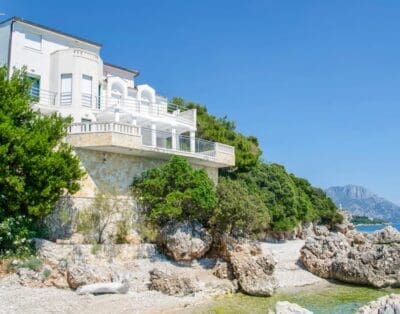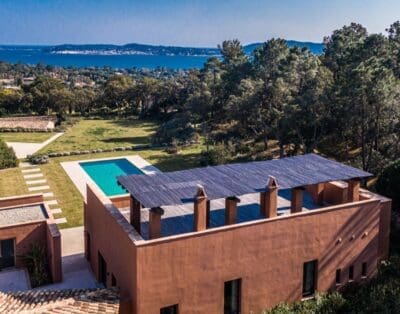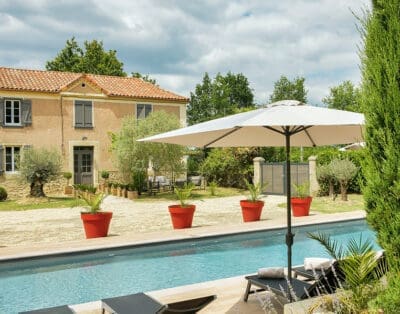Glenmorangie – Traditional Yet Innovative
I cannot recall my first experience of tasting Single Malt whisky, but there is a very strong likelihood it was Glenmorangie. Probably around the summer of 1988 before I was old enough to drive. A taste given as part of my wine and spirits course at college.
It is a brand synonymous amongst the public (in the UK at least) as being a top-shelf whisky, one that you were always delighted to receive as a gift. You knew you were valued as a recipient – it was one of the most expensive whiskies the supermarkets stocked. Even though I was a Sommelier in a Michelin star restaurant for many years, the notion that other whiskies were available was alien to me. I had never seen a bottle of Macallan, Ardbeg, or GlenDronach. In fact, I had never heard of them. Yet I knew all about First Growth Bordeaux, DRC, Grange and Opus One.
I can only put this down to the lack of availability. I was unaware of any specialist whisky shops and fine wine merchants didn’t list them. The distilleries seemed to have no voice. Marketing was non-existent in the magazines that 20 somethings read. The result was a band of loyal customers, generally older men set in their ways. Innovation and different cask finishes were at most a concept buried deep in the mind of the whisky makers. Whisky was out of fashion. A 15-year-old expression might have a significant proportion of 18 or 21-year-old spirit in them, hence the strong market for core releases from the 80s and 90s.
In part the industry had itself to blame, it was competing against Cognac houses who were active in promotion. I was even flown to Martell in a private jet for 3 days of tasting as part of a promo trip. You may recall French sommeliers of the era proudly wheeling around a drinks trolley laden with Cognac, Armagnac, Calvados and digestives as coffee was served. I am not sure whisky was part of the sommelier’s language back then.
Having been a whisky drinker for 3 decades, and Glenmorangie for most of those, I could not miss an opportunity to make the 2-hour drive north from Speyside when I was visiting recently. I was eager to visit this historic distillery that traces its roots back to the 1730s when a brewery was established on the Morangie farm. 113 years later, equipped with 2 old gin stills, William Matherson purchased the farm and brewery and turned it into a distillery. The drive was going to be worth every second to see traces of this history in person.
I had been invited to stay at the Glenmorangie House the night prior to my visit (theglenmorangiehouse.com), a spectacular boutique hotel the distillery owns. Located in what seemed to be the middle of nowhere, reached via narrow windy lanes, I certainly had a serious conversation with my sat-nav until my eyes fell upon a reassuring sign. A warm greeting was received before being shown to my room, an opulent space complete with a four-poster bed. Why am I always alone on these trips! It was simply beautiful. Having taken a shower in the wide-open space of the bathroom, I headed downstairs for cocktails with my host, Ludo and other guests.
Dinner was wonderful, made more special by the wine, which featured Leeuwin Estate Chardonnay, an old favourite of mine. It was so nice to be out for dinner again with such good company, something I had missed due to covid. The conversation flowed freely, as it generally does when fine wine is enjoyed before we retired to the lounge for after-dinner drinks and coffee. Glenmorangie may be historic but the service was modern, with no drinks trolley in sight. I have no idea if cognac was available, who would possibly want one here? Instead, I opted for an Ardbeg Traigh Bhan, 19-year-old, Batch 3 and also owned by LVMH. It’s a whisky I own myself and might have gotten a little carried away with the amount I enjoyed. But this is the drinks industry – you shouldn’t apologise for drinking…
Breakfast consumed, it was time to make the short drive to the distillery. The road seemed very familiar to me, not as I had driven along it the previous afternoon, but because I had in June whilst on holiday, driving the North Coast 500. I wish I had taken a detour then with my friends it was so close to the route, especially being just a few miles away from the hotel we stayed in.
Entering the estate for the first time sparks an emotional reaction. You cannot help but be impressed by the red sandstone distillery. A rainbow to the left encapsulates just how magical it is. It couldn’t be more inviting with its distinctive red doors guarding the secrets within. I felt excited, this is a distillery with deeply rooted tradition, yet is contemporary, forward-thinking and exciting.
It’s hard to come up with original thoughts about Glenmorangie and its whisky. It must be one of the most written about spirits in the world. It is well documented that the highest stills in Scotland (8 meters) are located here. In comparison, a giraffe’s neck is 5.1 meters. This similarity has led to the distillery’s commitment to giraffe conversation and a fund-raising campaign that includes distinctive giraffe brand packaging. This is vitally important given that Giraffe are already extinct in at least seven countries in Africa.
Although giraffes only drink water occasionally, water is paramount to whisky and one of the most essential components. The water here is hard and flows from the Tarlogie Springs that surfaces nearby. This body of water has crept slowly through layers of limestone and sandstone for hundreds of years, giving it a definite minerality that is much cherished and greatly adds to the flavour profile of the whisky. To preserve this integral component of their whisky, the distillery purchased the surrounding forest to ensure its constant supply.
What impressed me most at the distillery was not only the commitment to sustainability and giraffe conservation but the investment in a new experimental distillery called the Lighthouse. A 20m high glass cathedral, designed by famed architects Barthélémy Griño, will house two additional stills for Dr Bill Lumsden (the director of whisky creation) to experiment in. This is a luxury rarely found, much the same as a 3 Michelin starred restaurant having a test kitchen. A place to play with different mash bills, techniques and temperatures. Spirits that the public will probably never try, but may form the backbone of future releases for the next generation.
Although the stills are of the same basic design as the original ones, there are some key differences, most importantly perhaps, the hollow water-cooling jackets. These will allow the rate of reflux to be adjusted allowing control over whether the spirit is lighter or heavier. The base of the imposing glass tower will contain a mill, allowing a variety of grains and cereals to be used. I can only imagine what Dr Bill might conjure up here. But as the Lighthouse will be closed to the public, I very doubt I will have an opportunity to find out.
At the top of the tower (there is a lift) a purpose-built Sensory Lab has been created. It offers far-reaching views over the Dornoch Firth, the most northerly large estuary in Britain. The Dornoch Firth is one of just 40 National Scenic Areas in Scotland. Quite remarkable given that almost every view in the Highlands is breathtaking. If you’re lucky you might catch sight of an osprey in the breeding season or maybe you’d have more chance of spotting a Harbour seal perched upon a sandbank. The seals in this one location represent 2% of the UK population.
Sustainability is important and Biogas will be used to power a significant part of the Lighthouse and an anaerobic digestion (AD) plant has been built to process organic waste from the distillery. This will reduce its biological impact on the Dornoch Firth by 95%. As a further indication of their seriousness about the environment, Glenmorangie is working with scientists at Heriot-Watt University on the Dornoch Environmental Enhancement Project project (DEEP). This project involves the reintroduction of native European oysters to the water. Overconsumption put an end to the oysters over 100 years ago. They are incredible creatures as they not only provide a home for other creatures within all their nooks and crannies, but they can purify up to 240 litres of water a day. 20,000 oysters have already been introduced with plans for 4 million more. Research has also suggested that oyster beds can act as a carbon sink adding another layer of sustainability.
Dr Bill has been a visionary within the whisky industry for decades. I haven’t met him, but I can tell he’s my type of man. Someone who is not afraid of challenging the status quo, fighting for what he believes in. He’s prepared to push right up to the boundaries of the rules laid down by the Scotch Whisky Association. Glenmorangie Signet is a fine example. It’s a bit like a Formula 1 team – top performance by just keeping within the letter of the law. Of course, this playfulness only represents a small fraction of the whisky produced at Glenmorangie – the vast majority being more traditional core-range products.
Dr Bill is also not afraid to voice his opinion, something else I admire. He has certainly mentioned his dislike for some of the 3-year-old whisky currently being released by new distilleries. These whiskies might cost three figures – the same as a solid 12-, 15- or even 18-year-old by an established distillery. I can’t help but agree with Dr Bill concerning value-for-money. But, I also understand that these distilleries have to release products to be financially viable. So they’re still here in 18 years. With an English distillery, I’d also argue that you have to factor in the maturation will be faster simply due to a warmer climate. He is also critical of those making brazen claims to be innovative, often by doing things he did himself 20 years ago. This is a fair point. Dr Bill is someone who travelled extensively, particularly to wine regions, to discover different possibilities for alternative cask maturation or finishes.
It is this level of passion and eagerness to create that enthrals. To me, whisky and wine are about the exploration of flavour. I rarely buy the same bottle twice, as to my mind this defeats the object of my relationship with them. I am always chasing the next experience and hoping that it will transport my senses to a new place. The thrill of the chase if you like. And long may Dr Bill conjure up these outstanding journeys in flavour.
I may not be able to recall my first sip of whisky, but I can certainly remember my most recent tastes of Glenmorangie:-
Glenmorangie Signet – 46%
A developed and grown-up nose that has Christmas flavours all over it. Oak, vanilla and spice on the palate with candied fruits and raisins complemented by dark chocolate and a hint of expresso. This has been made with Cadboll barley alongside malted chocolate barley which you may have come across before from its use in stouts, hence the chocolate nuances. Think of a Christmas cake coated in chocolate. Divine!
Glenmorangie A Tale of Winter – 46%
Pencil shavings on the nose followed by black treacle. Quite fruity on the palate with a hint of creamy vanilla fudge studded with nuts.
Glenmorangie Cadboll – 43%
A peachy come apricot vibe on the nose, reminiscent of a Tarte Tatin. Surprisingly dryer than expected with breakfast cereals like bran on the palate but with a hint of honey. I suspect the apricot notes come from the French casks that previously held Muscat amongst others. It has a beautiful richness to it
Glenmorangie Lighthouse Distillery Exclusive 12 year old
More of a honey and citrus character with cereal and vanilla on the nose. The palate is developed with roasted hazelnuts, almonds and honey (coming from the bourbon (80%) and sherry casks (20% no doubt) and apricot danishes.
Glenmorangie Grand Vintage 1996 – 43%
Bottles in 2019 as a 23-year-old, I found sweet citrus on the nose with marzipan coated fruit cake intertwined with floral aromas. A lively palate that is fresh and invigorating. Think Jamie Olivers’ dried fig and honey semi-fredo drizzled with orange caramel. Lovely!
Glenmorangie Grand Vintage 1997
My son’s birth year, and has been aged for the first 10 years in ex-Bourbon casks before spending 13 years in barrels sourced from the wonderful Château Montrose in Saint-Estèphe. You often find that this appellation produces wines that are more earthy than other Bordeaux areas so I was excited to try it.
I found it to be less pronounced on the nose than the ‘96 initially but then opened to my surprise to be quite floral and fruity with hints of citrus. The palate shows cigar box nuances and more depth than the ‘96. It had a balanced spiciness alongside baking spices and almonds.







